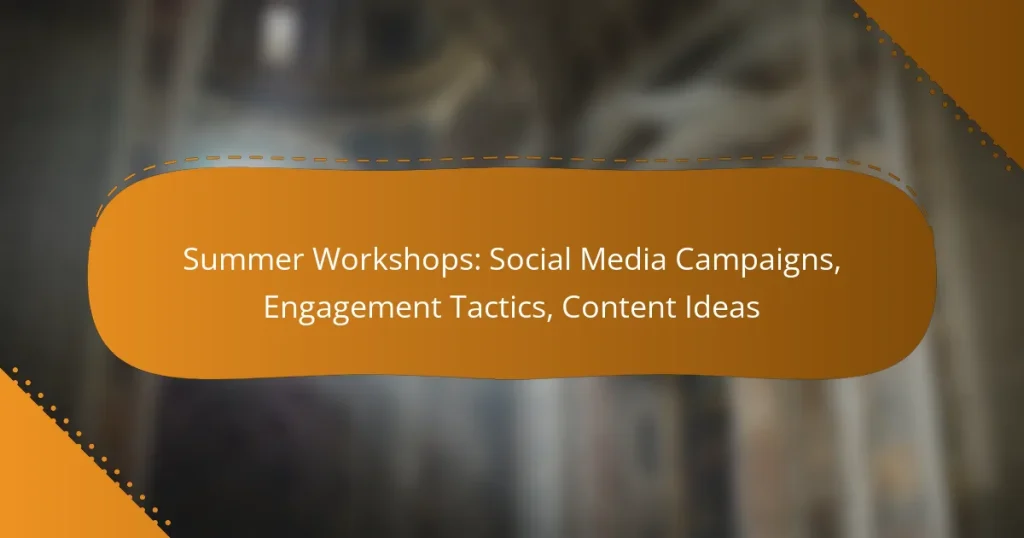Summer workshops provide a unique opportunity to leverage social media for enhanced engagement and participation. By setting clear objectives and understanding your audience, you can create tailored campaigns that resonate with seasonal interests. Incorporating interactive content and user-generated experiences will not only boost engagement but also create a vibrant community around your events.
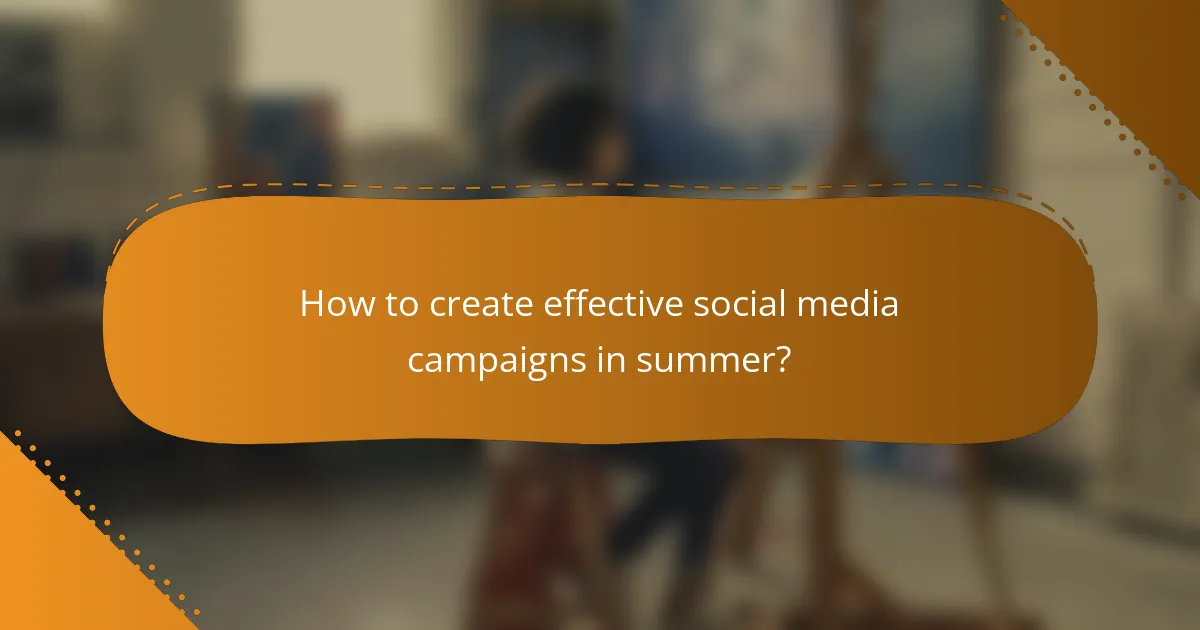
How to create effective social media campaigns in summer?
Creating effective social media campaigns during the summer involves setting clear objectives, understanding your audience, and crafting engaging content tailored to seasonal interests. By focusing on these elements, you can maximize engagement and reach during this vibrant time of year.
Define campaign goals
Start by establishing specific, measurable goals for your summer campaign. Common objectives include increasing brand awareness, driving website traffic, or boosting sales during seasonal promotions.
Consider using the SMART criteria—Specific, Measurable, Achievable, Relevant, Time-bound—to refine your goals. For example, aim to increase your follower count by 20% over the summer months.
Identify target audience
Understanding your target audience is crucial for crafting relevant content. Analyze demographic data, interests, and behaviors to pinpoint who you want to reach during the summer.
Utilize tools like social media analytics to gather insights on your audience. For instance, if your brand appeals to families, focus on content that resonates with parents planning summer activities.
Select platforms
Choose the social media platforms that best align with your campaign goals and target audience. Popular options include Facebook, Instagram, and TikTok, each offering unique features suitable for summer engagement.
Consider where your audience spends their time. For visual content, Instagram may be ideal, while Facebook can be effective for community-building and event promotion.
Develop content strategy
Your content strategy should focus on creating engaging, seasonal content that resonates with your audience. Plan a mix of posts, including promotional offers, user-generated content, and interactive elements like polls or contests.
Incorporate summer themes, such as outdoor activities or travel tips, to capture attention. For example, share a series of posts featuring summer recipes or vacation ideas that encourage audience interaction.
Set a budget
Establishing a budget is essential for managing your summer campaign effectively. Determine how much you can allocate for paid advertising, content creation, and influencer partnerships.
Consider a range for your budget based on your goals. For instance, a small business might start with a few hundred USD, while larger brands may invest thousands for broader reach. Always track spending to ensure you stay within limits and adjust as needed.
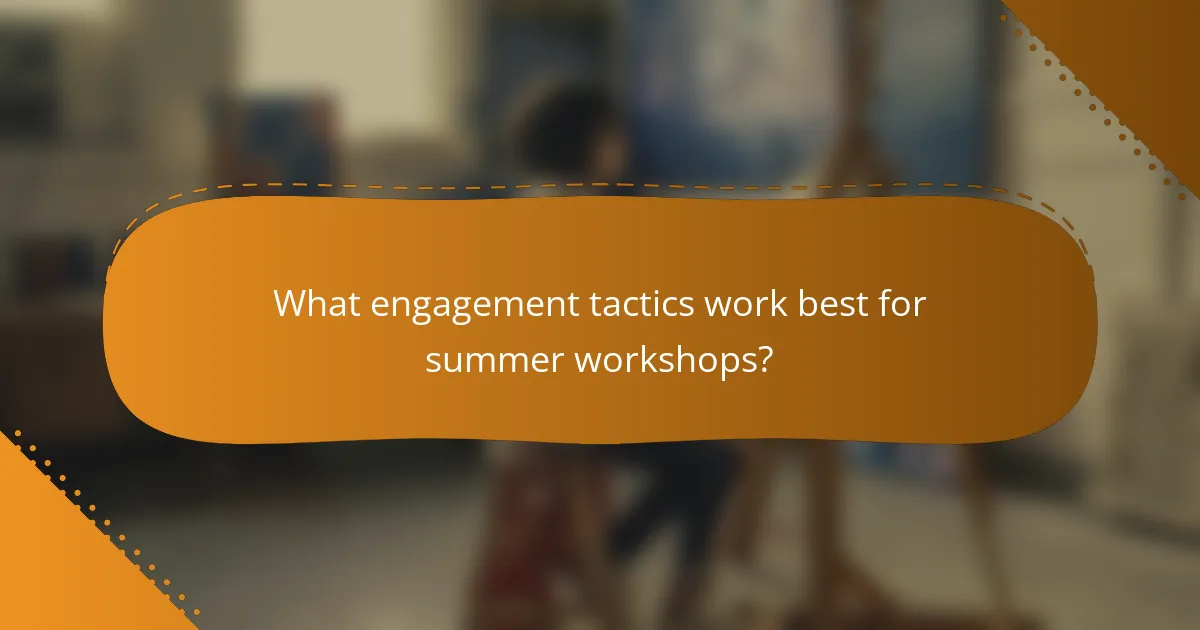
What engagement tactics work best for summer workshops?
Effective engagement tactics for summer workshops include interactive content, live Q&A sessions, user-generated content, and contests. These strategies foster participation and enhance the overall experience for attendees.
Utilize interactive content
Interactive content, such as polls, quizzes, and surveys, can significantly boost engagement during summer workshops. These tools encourage participants to actively contribute their opinions and preferences, making the experience more dynamic.
Consider incorporating tools like Kahoot or Mentimeter to create real-time interactions. This not only keeps attendees engaged but also provides valuable feedback that can be used to tailor future workshops.
Host live Q&A sessions
Live Q&A sessions allow participants to ask questions directly to facilitators or guest speakers, fostering a sense of community and connection. These sessions can be scheduled at the end of each workshop or as standalone events to address specific topics.
Promote these sessions in advance through social media channels to maximize attendance. Ensure that questions are collected beforehand to streamline the discussion and cover the most relevant topics.
Leverage user-generated content
Encouraging participants to create and share their own content related to the workshop can enhance engagement. This could include testimonials, photos, or videos showcasing their experiences and learnings.
Utilize specific hashtags on platforms like Instagram or Twitter to track and promote this content. Highlighting user-generated posts can create a sense of community and encourage others to participate actively.
Implement contests and giveaways
Contests and giveaways can incentivize participation and increase excitement around your summer workshops. Consider offering prizes that are relevant to the workshop theme, such as books, tools, or free tickets to future events.
Set clear rules and promote the contests through your social media channels. This not only boosts engagement but also expands your reach as participants share their entries with their networks.
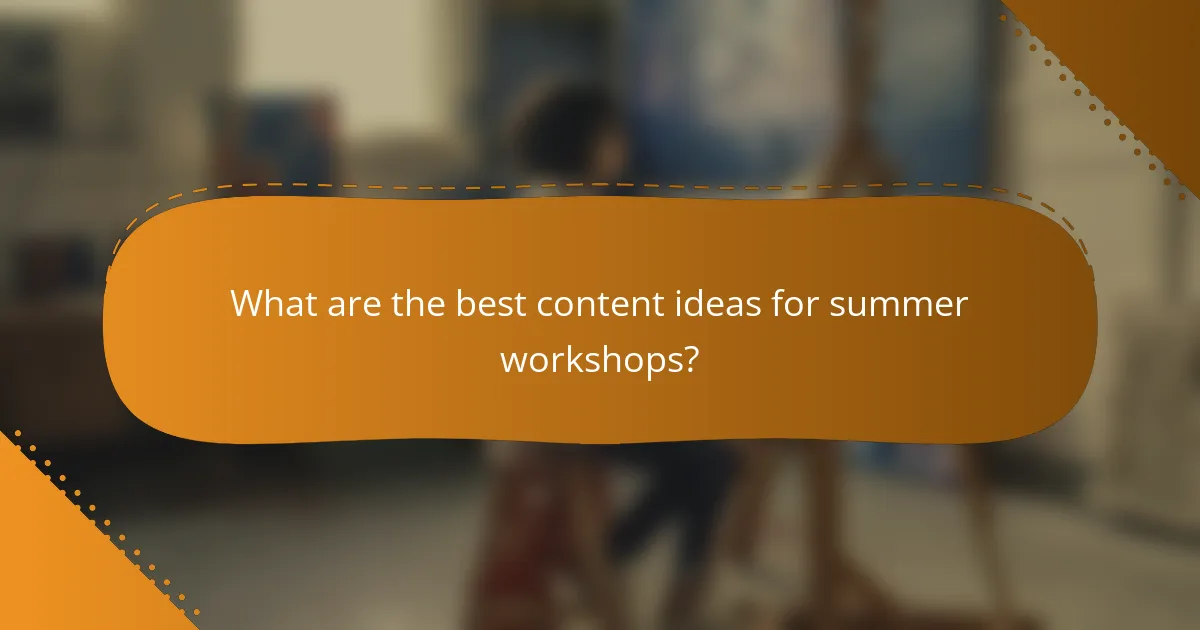
What are the best content ideas for summer workshops?
Engaging content ideas for summer workshops can significantly enhance participation and interest. Focus on themes that resonate with the season, showcase authentic experiences, and highlight success stories to attract and retain attendees.
Seasonal themes
Incorporating seasonal themes into your summer workshop content can create a vibrant atmosphere and attract more participants. Consider topics like outdoor activities, summer wellness, or creative arts that align with the season. For example, a workshop on photography could focus on capturing summer landscapes or events.
Utilize visuals and colors that evoke summer vibes, such as bright yellows and blues, to enhance your promotional materials. This can make your content more appealing and relatable to your audience.
Behind-the-scenes content
Sharing behind-the-scenes content allows potential participants to connect with your workshop on a personal level. Showcase the preparation process, introduce the team, or highlight the venue setup. This transparency builds trust and excitement.
Consider using short videos or live streams on social media to give a sneak peek of what attendees can expect. Engaging storytelling can make your workshop feel more inviting and relatable, encouraging sign-ups.
Success stories and testimonials
Highlighting success stories and testimonials from past participants can effectively demonstrate the value of your summer workshops. Share quotes, videos, or case studies that showcase how attendees benefited from your sessions.
Encourage previous participants to share their experiences on social media, tagging your workshop. This not only provides authentic content but also expands your reach through their networks, attracting new attendees.
Expert interviews
Featuring expert interviews can add credibility and depth to your summer workshop content. Invite industry professionals to discuss relevant topics, share insights, or provide tips that align with your workshop themes.
Post these interviews as articles or videos on your website and social media platforms. This not only enriches your content but also positions your workshop as a valuable resource in the field, attracting more participants eager to learn from experts.
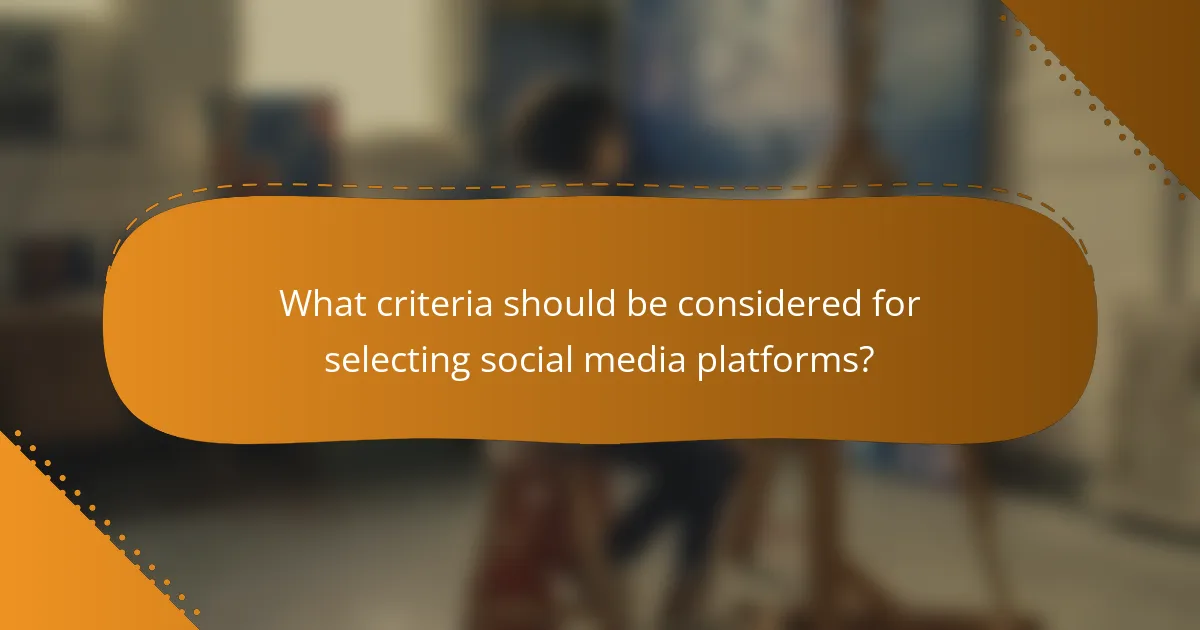
What criteria should be considered for selecting social media platforms?
Selecting social media platforms requires careful consideration of various criteria to ensure effective engagement and reach. Key factors include understanding your target audience, the types of content you plan to share, and how well each platform facilitates interaction.
Audience demographics
Understanding audience demographics is crucial when choosing social media platforms. Different platforms attract distinct user groups based on age, gender, location, and interests. For instance, Instagram tends to have a younger audience, while Facebook appeals to a broader age range.
Analyze your target audience to determine where they spend their time online. Tools like audience insights on Facebook or Instagram can provide valuable data on user characteristics that align with your campaign goals.
Content format compatibility
Each social media platform supports different content formats, which can significantly impact your campaign’s effectiveness. For example, visual content, such as images and videos, performs well on Instagram and TikTok, while text-based posts may be more suitable for Twitter or LinkedIn.
Consider the types of content you plan to create and ensure they align with the platform’s strengths. If your strategy includes video content, prioritize platforms that support high-quality video sharing and engagement.
Engagement rates
Engagement rates vary across social media platforms and can influence your choice. Higher engagement rates indicate a more active user base, which can lead to better visibility and interaction with your content. Platforms like TikTok often show higher engagement rates compared to others.
Evaluate the average engagement rates for your target platforms and consider how these rates align with your goals. Aim for platforms where users are more likely to interact with your content, as this can enhance your campaign’s overall success.
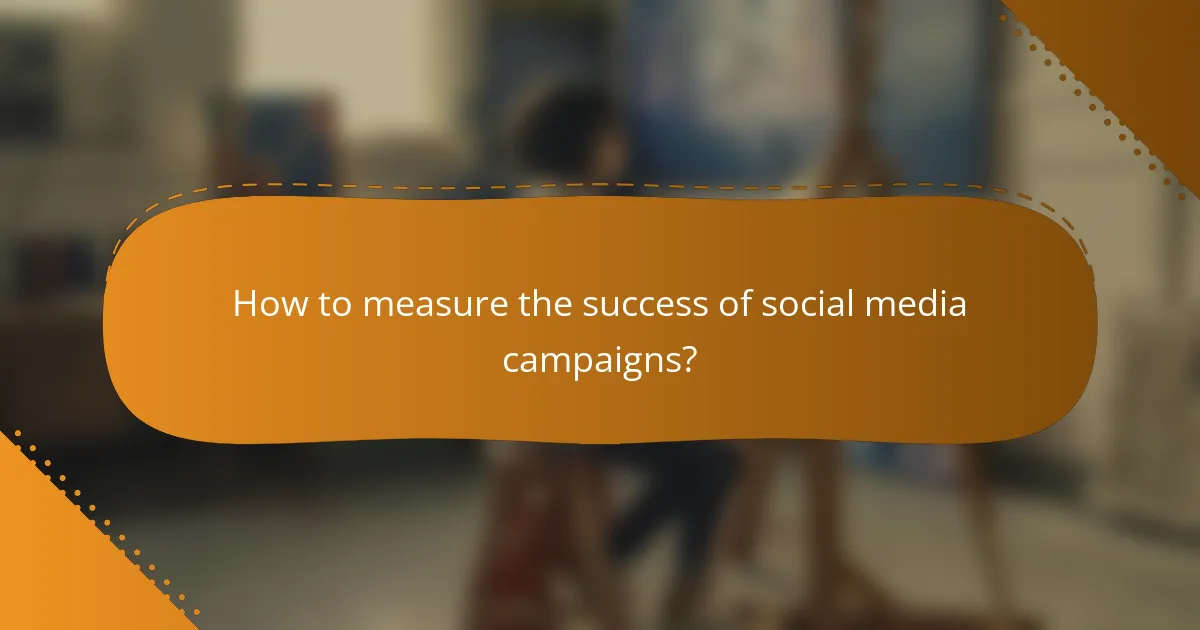
How to measure the success of social media campaigns?
Measuring the success of social media campaigns involves analyzing various metrics to determine their effectiveness. Key performance indicators (KPIs) such as engagement rates, reach, and conversion rates provide insights into how well your campaigns are performing.
Track engagement metrics
Engagement metrics are crucial for understanding how your audience interacts with your content. Key metrics include likes, shares, comments, and click-through rates. These indicators help you gauge the level of interest and involvement your audience has with your posts.
To track engagement effectively, use analytics tools provided by social media platforms, such as Facebook Insights or Twitter Analytics. These tools can help you identify which types of content resonate most with your audience, allowing you to adjust your strategy accordingly.
Common pitfalls include focusing solely on follower counts rather than meaningful interactions. Instead, prioritize metrics that reflect genuine engagement, such as shares and comments, which indicate a deeper connection with your audience.
